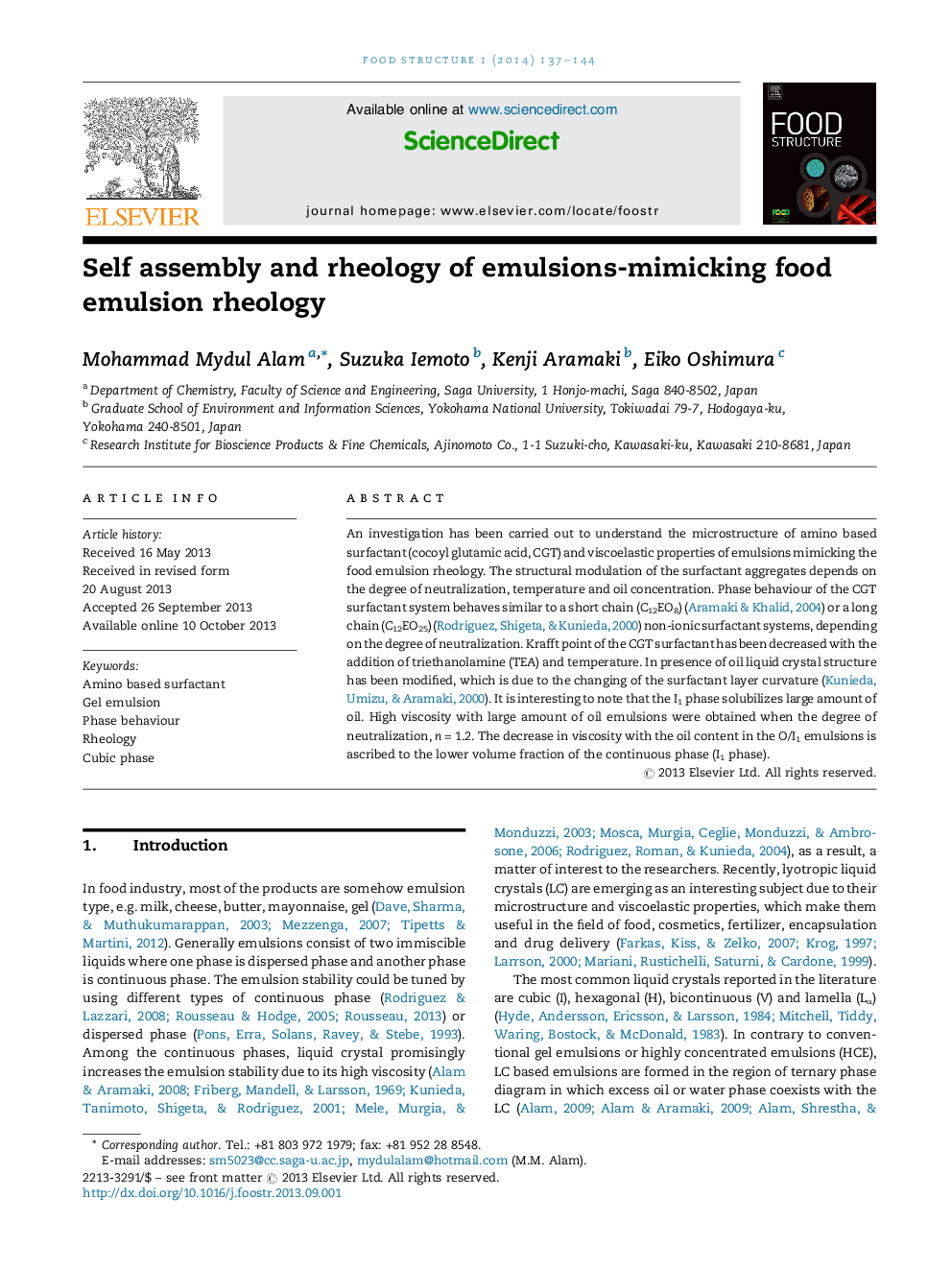| Article ID | Journal | Published Year | Pages | File Type |
|---|---|---|---|---|
| 19941 | Food Structure | 2014 | 8 Pages |
An investigation has been carried out to understand the microstructure of amino based surfactant (cocoyl glutamic acid, CGT) and viscoelastic properties of emulsions mimicking the food emulsion rheology. The structural modulation of the surfactant aggregates depends on the degree of neutralization, temperature and oil concentration. Phase behaviour of the CGT surfactant system behaves similar to a short chain (C12EO8) (Aramaki & Khalid, 2004) or a long chain (C12EO25) (Rodriguez, Shigeta, & Kunieda, 2000) non-ionic surfactant systems, depending on the degree of neutralization. Krafft point of the CGT surfactant has been decreased with the addition of triethanolamine (TEA) and temperature. In presence of oil liquid crystal structure has been modified, which is due to the changing of the surfactant layer curvature (Kunieda, Umizu, & Aramaki, 2000). It is interesting to note that the I1 phase solubilizes large amount of oil. High viscosity with large amount of oil emulsions were obtained when the degree of neutralization, n = 1.2. The decrease in viscosity with the oil content in the O/I1 emulsions is ascribed to the lower volume fraction of the continuous phase (I1 phase).
